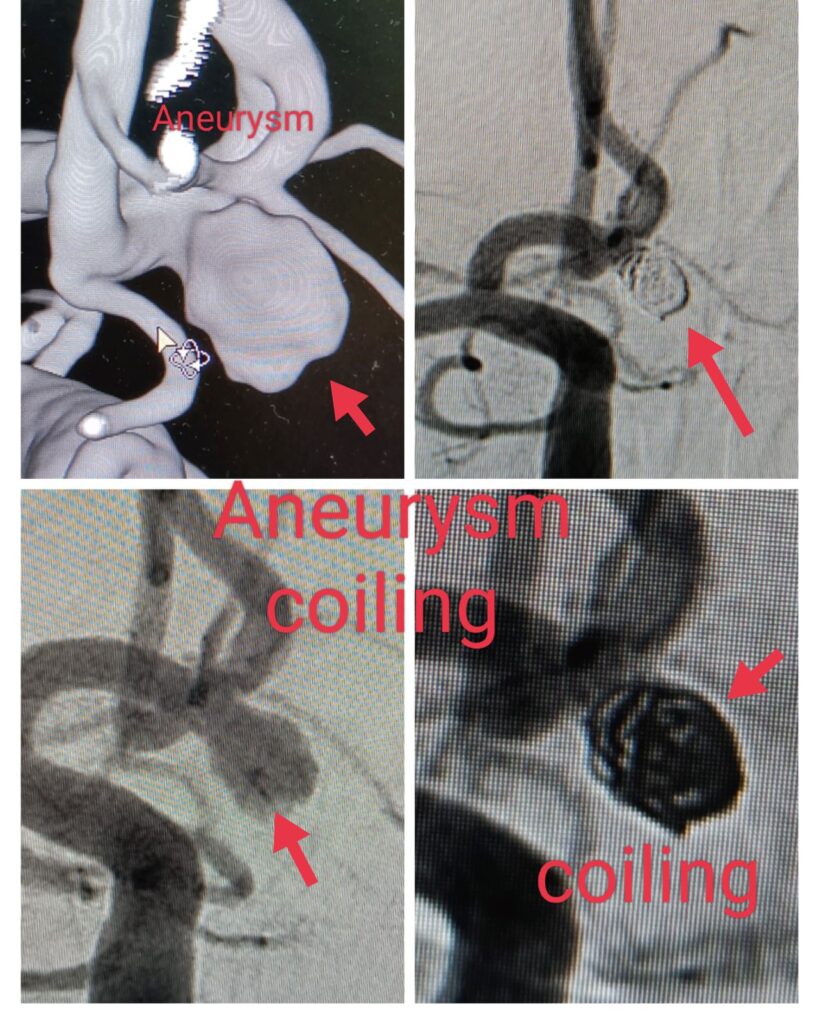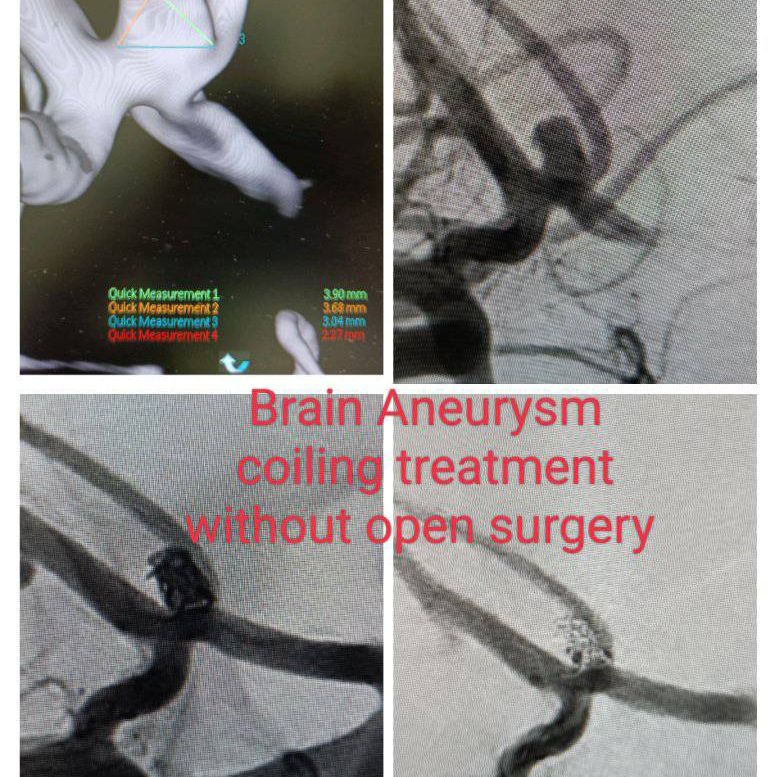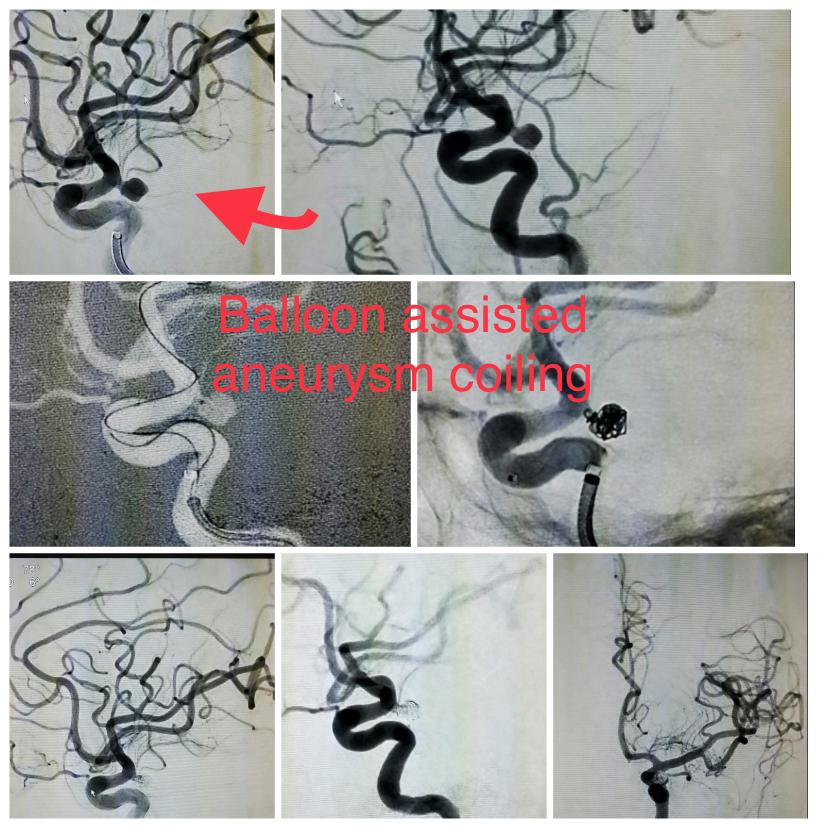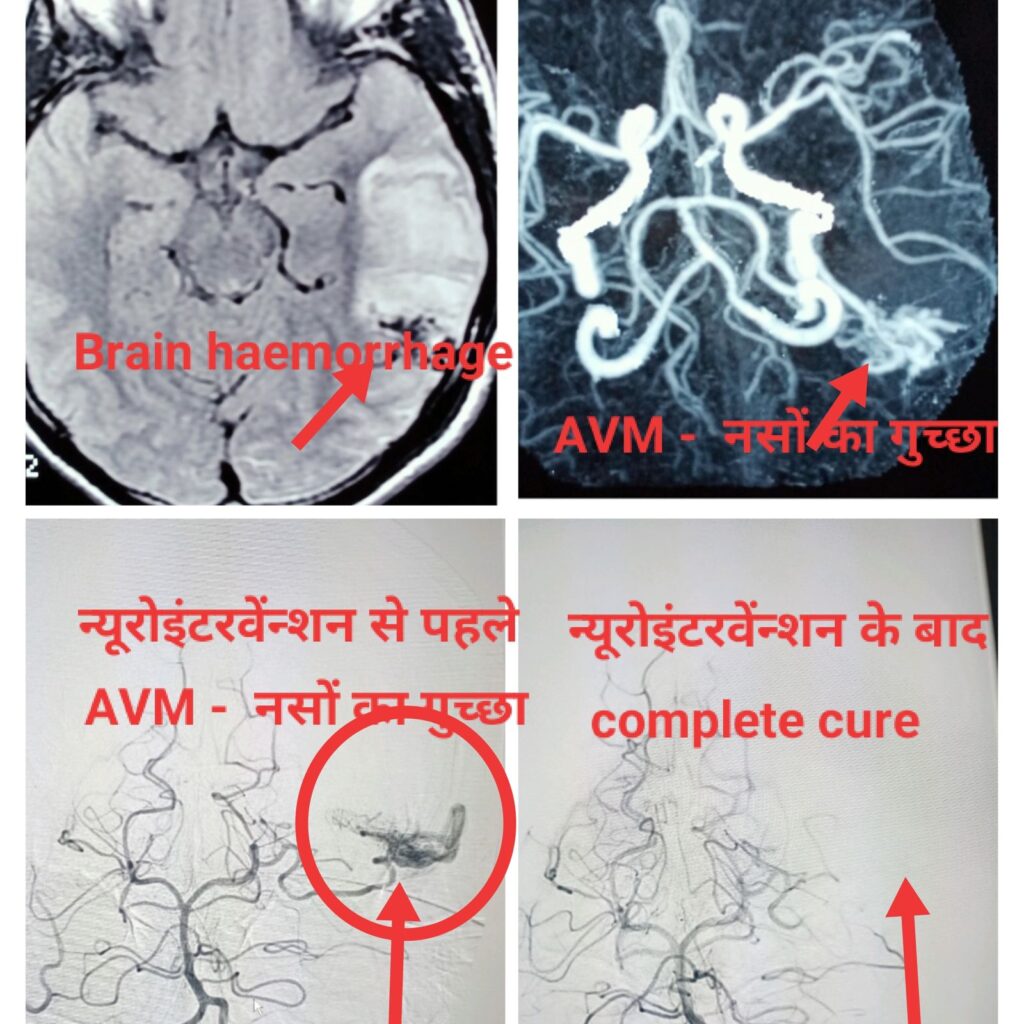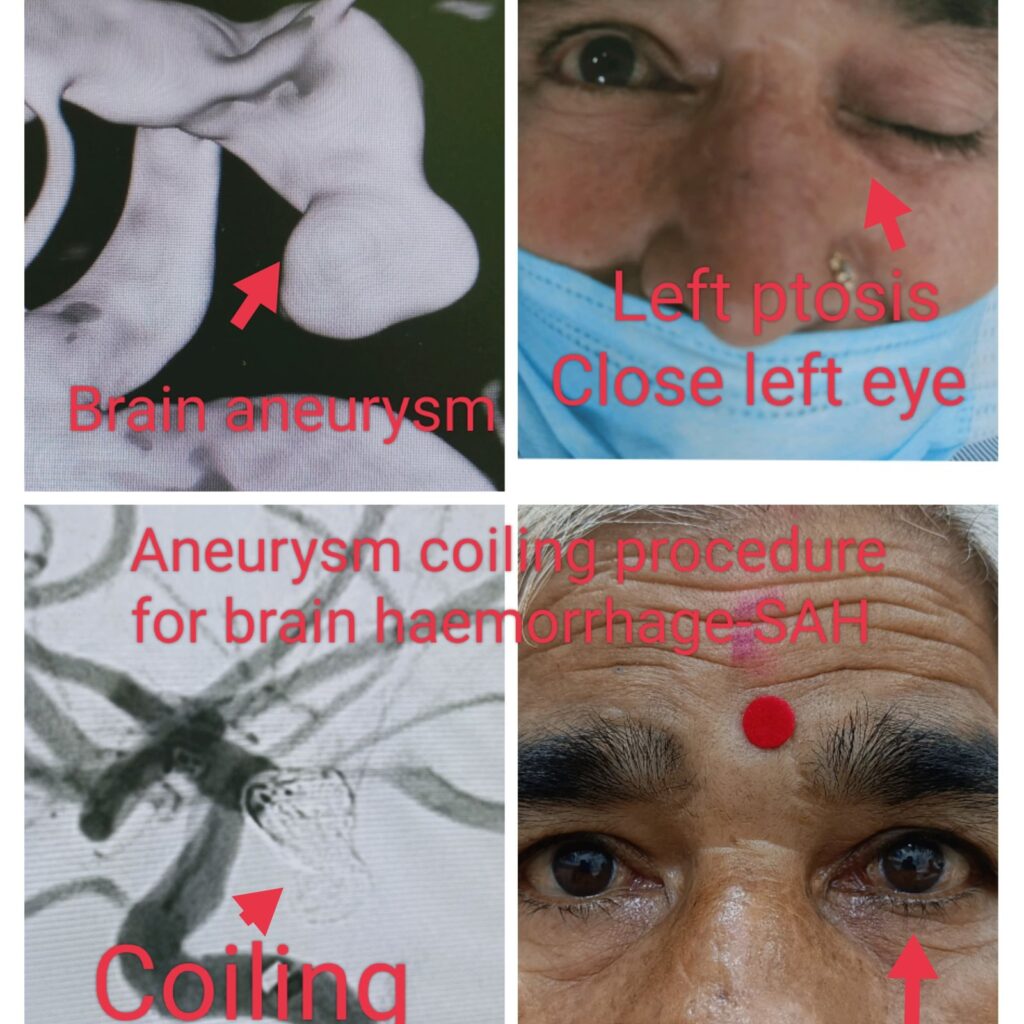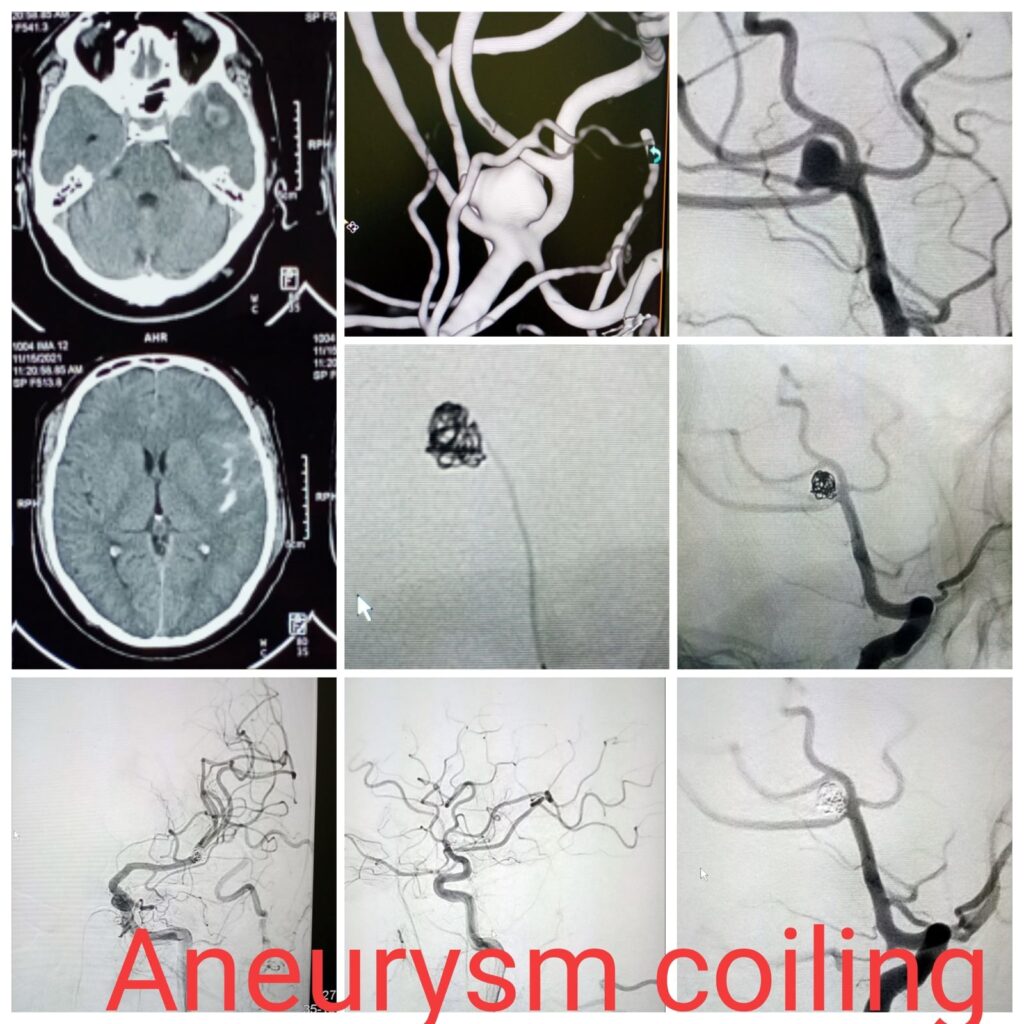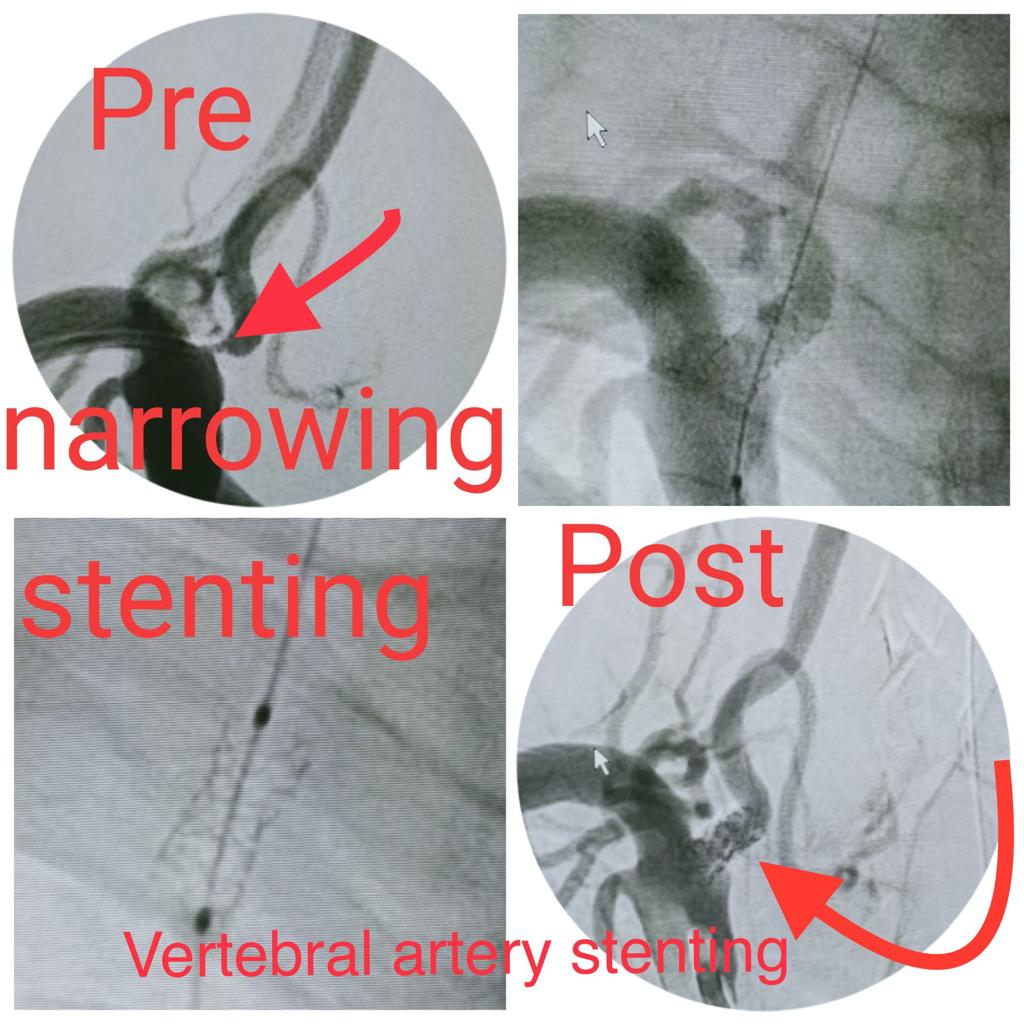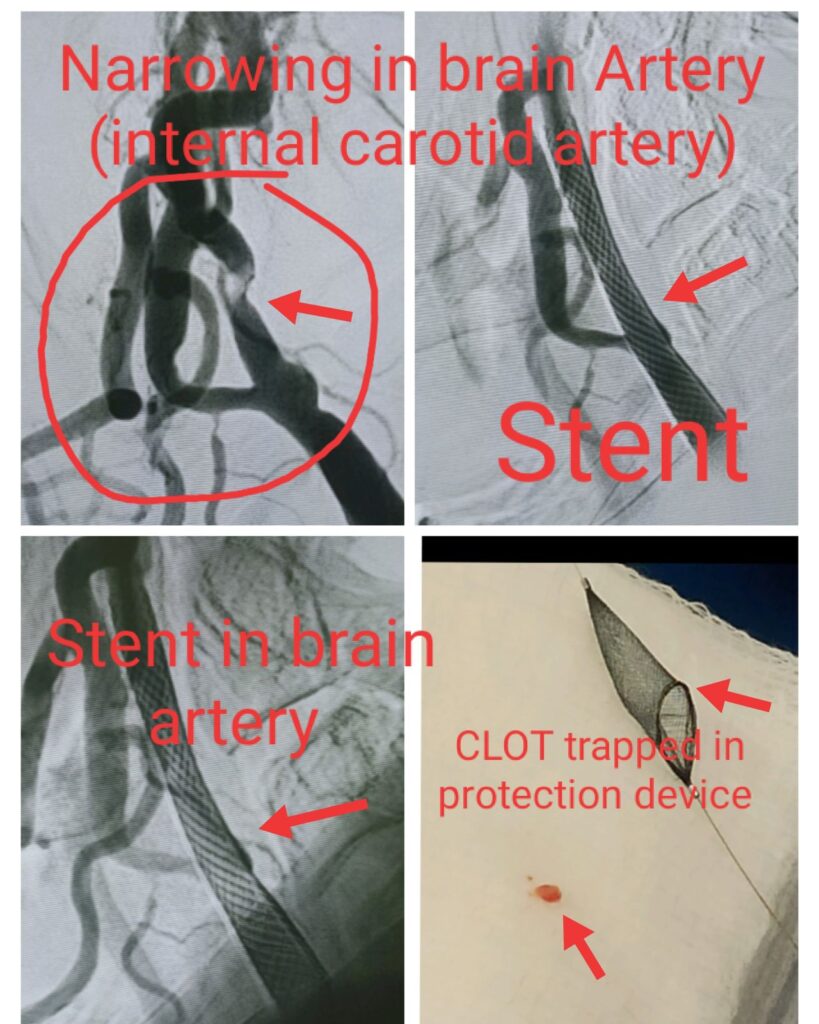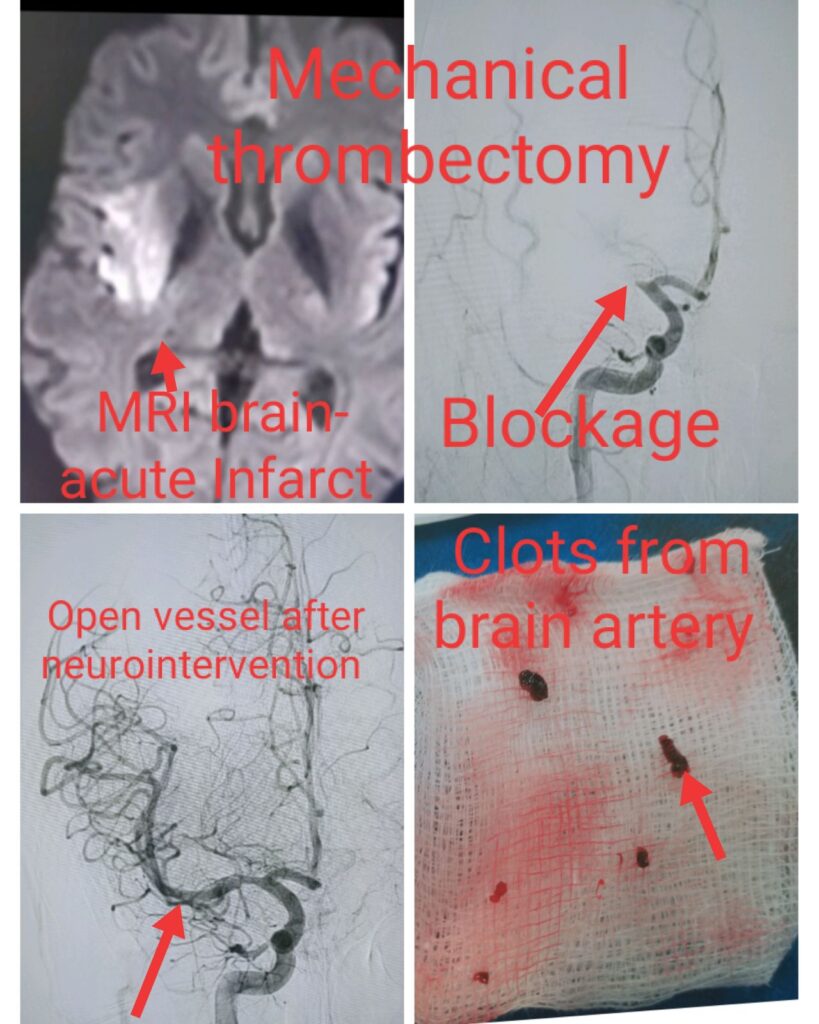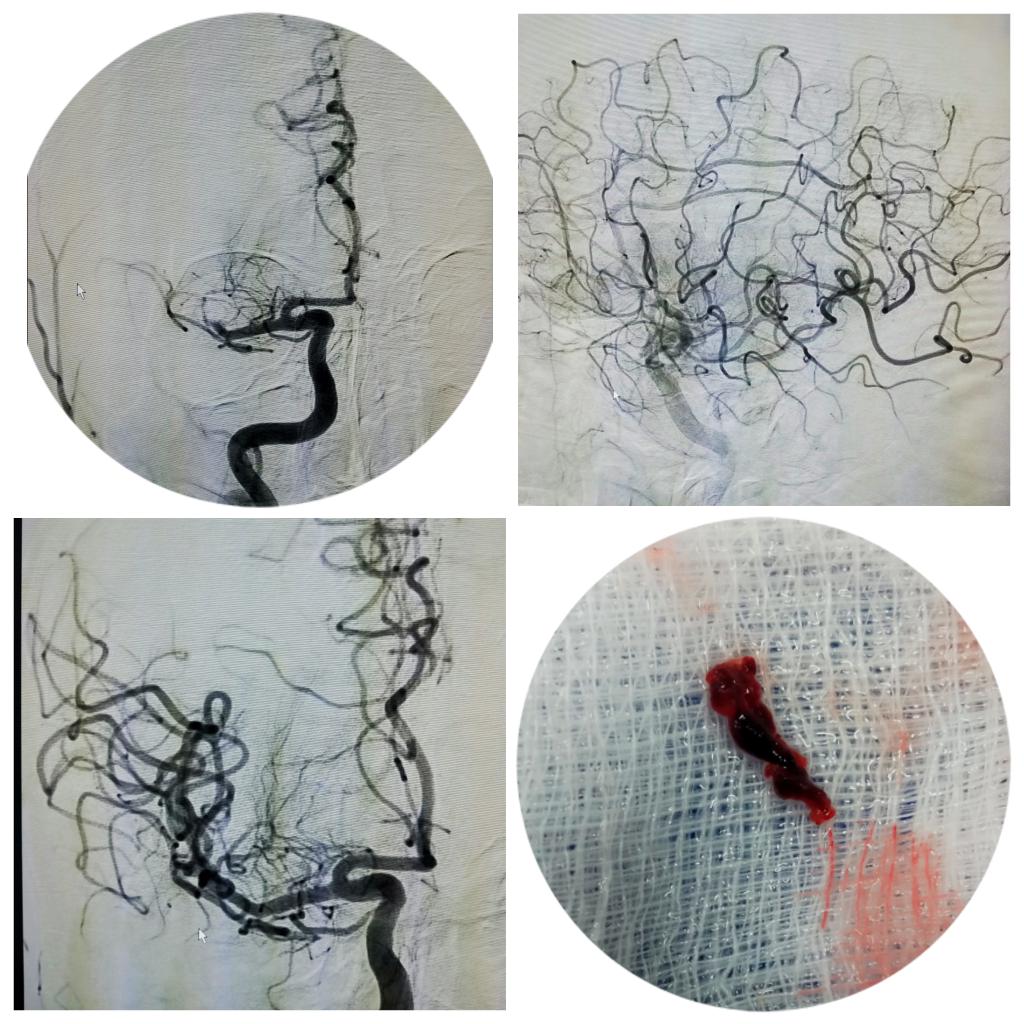
NeuroIntervention Procedures
CEREBRAL ANEURYSM
A cerebral aneurysm, also known as an intracranial aneurysm or brain aneurysm, is a weakened or bulging area in the wall of a blood vessel within the brain. It occurs when the constant pressure of blood flow causes a localized dilation, forming a balloon-like bulge. Cerebral aneurysms can vary in size and shape, ranging from small and unruptured to large and potentially life-threatening.
BRAIN & SPINE ARTERIOVENOUS MALFORMATION (AVM/AVF)
Brain and spine arteriovenous malformation (AVM) is a rare abnormality in the blood vessels that involves a tangle of arteries and veins in the brain or spinal cord. Normally, arteries carry oxygen-rich blood away from the heart, and veins return oxygen-depleted blood back to the heart. However, in an AVM, there is a direct connection between arteries and veins without the usual capillary network in between.
INTERCEREBRAL HEMORRHAGE
Intracerebral hemorrhage (ICH) is a type of stroke that occurs when there is bleeding within the brain tissue itself. It is usually caused by the rupture of a blood vessel, leading to the accumulation of blood in the surrounding brain tissue. ICH is a serious condition that requires immediate medical attention.
CAROTID VERTEBRAL AND INTRACRANIAL STENOSIS and STENTING
Carotid, vertebral, and intracranial stenosis refer to the narrowing or blockage of blood vessels that supply blood to the brain. These conditions can disrupt blood flow and increase the risk of stroke or transient ischemic attacks (TIAs), also known as "mini-strokes."
ACUTE ISCHEMIC STROKE
Acute ischemic stroke refers to a sudden loss of blood flow to a part of the brain, resulting in a lack of oxygen and nutrients to the affected area. It is the most common type of stroke, accounting for about 85% of all stroke cases. Acute ischemic stroke requires immediate medical attention as timely treatment can help minimize brain damage and improve outcomes.

